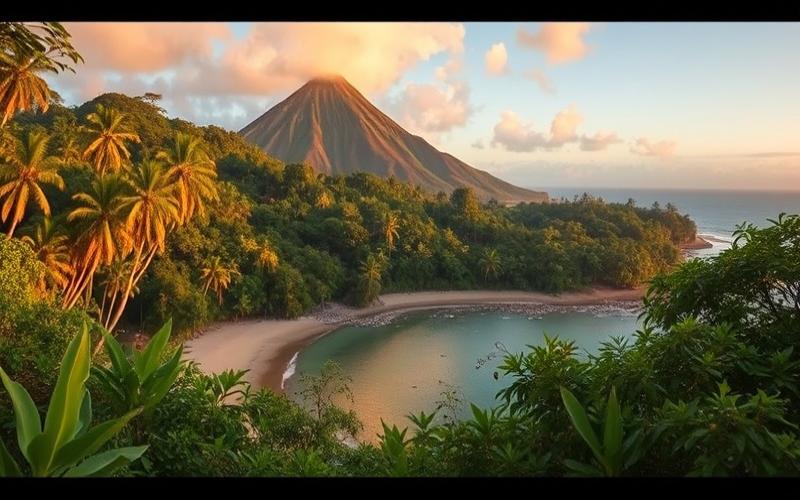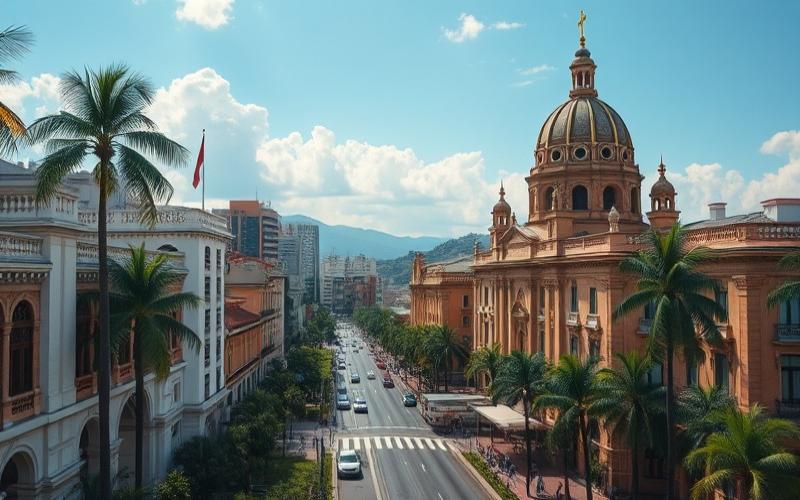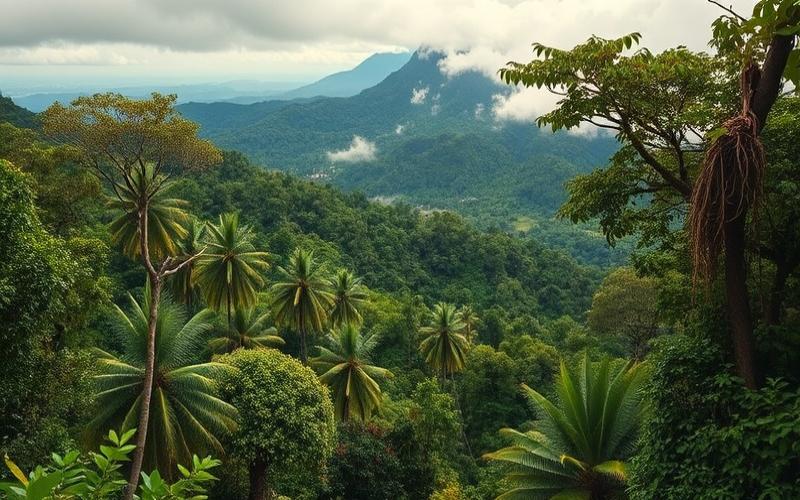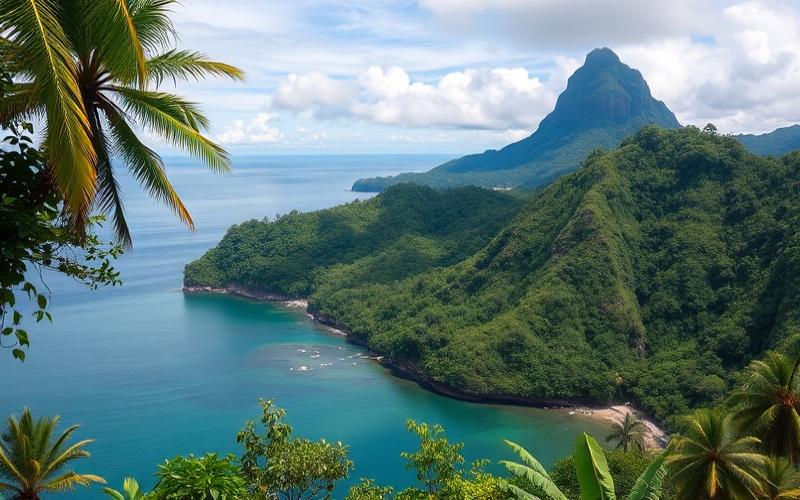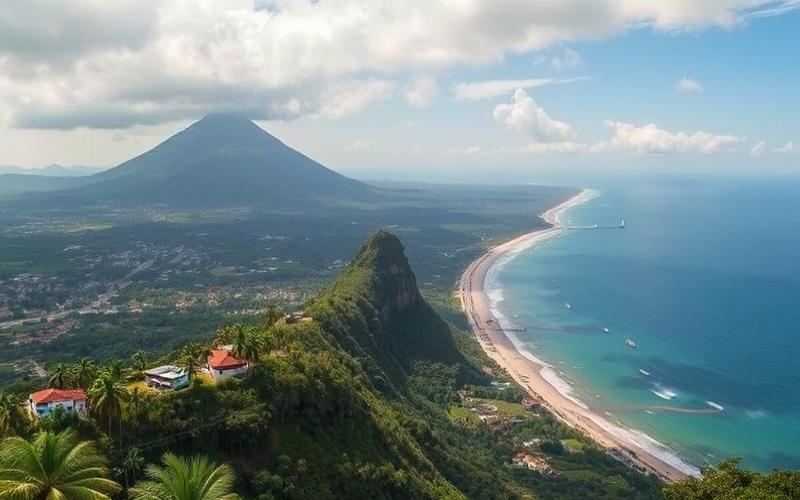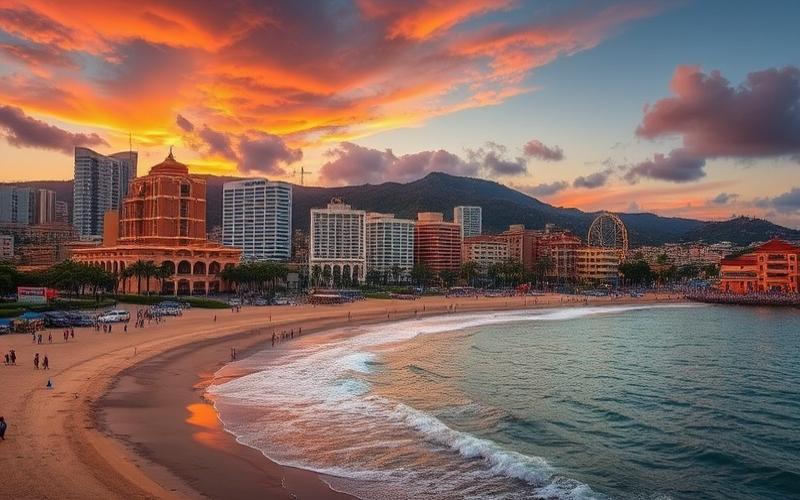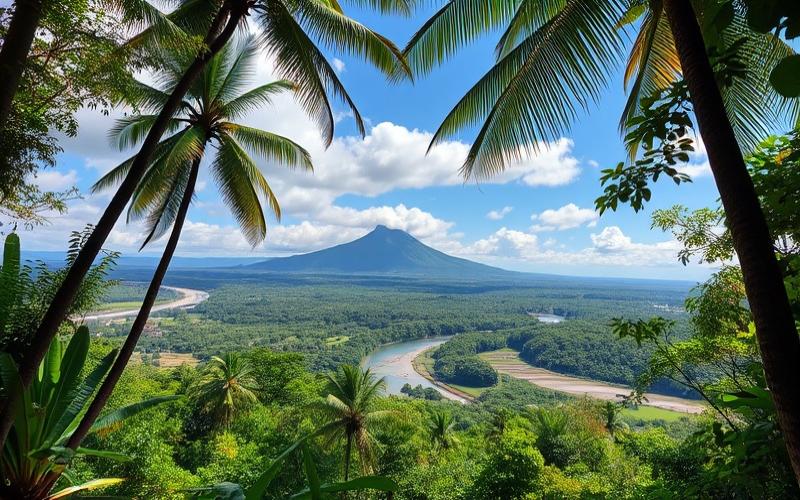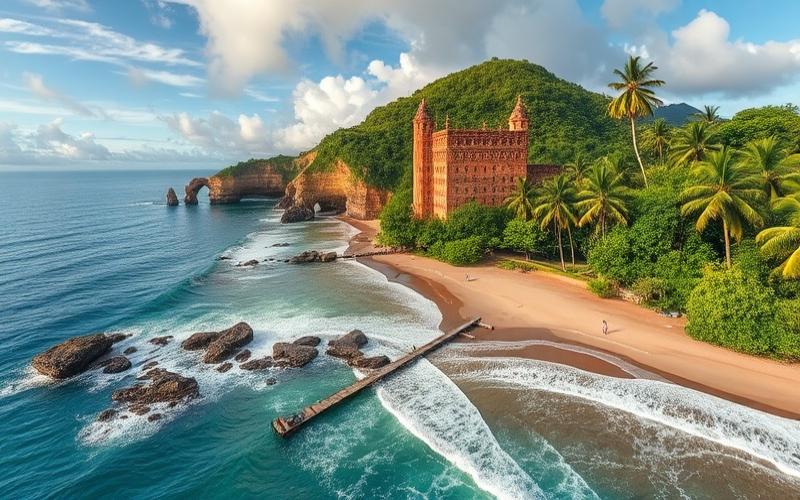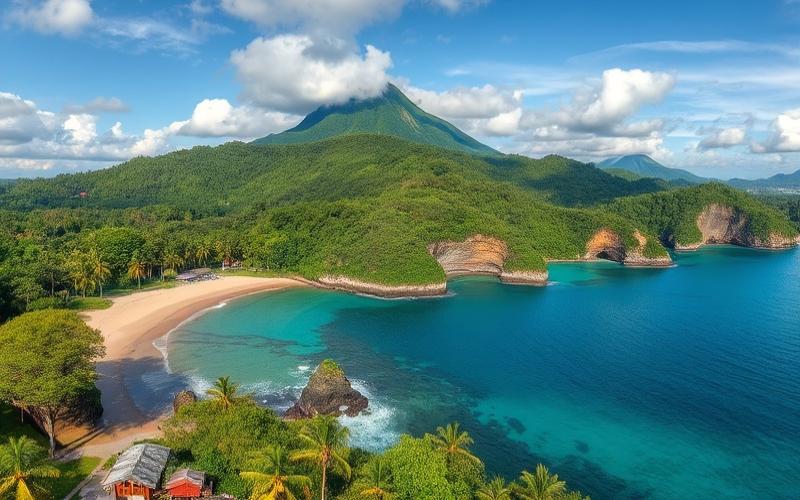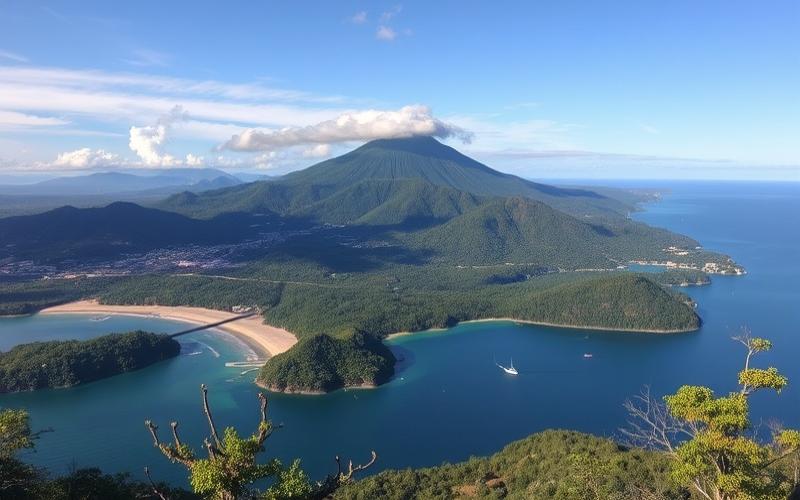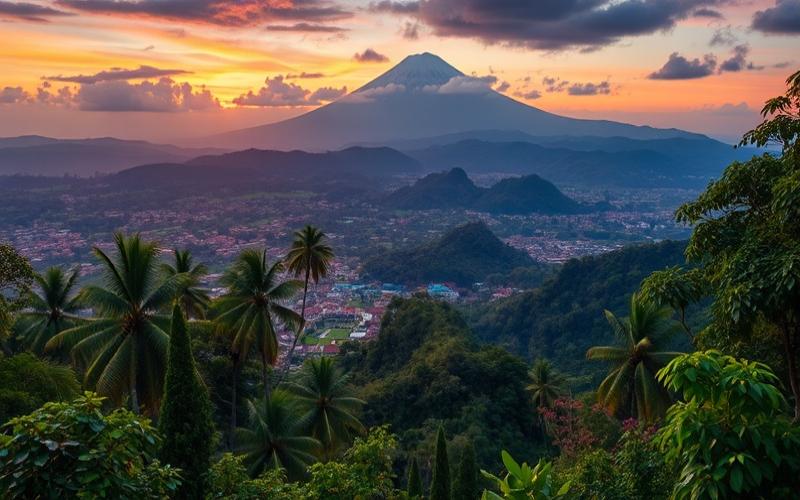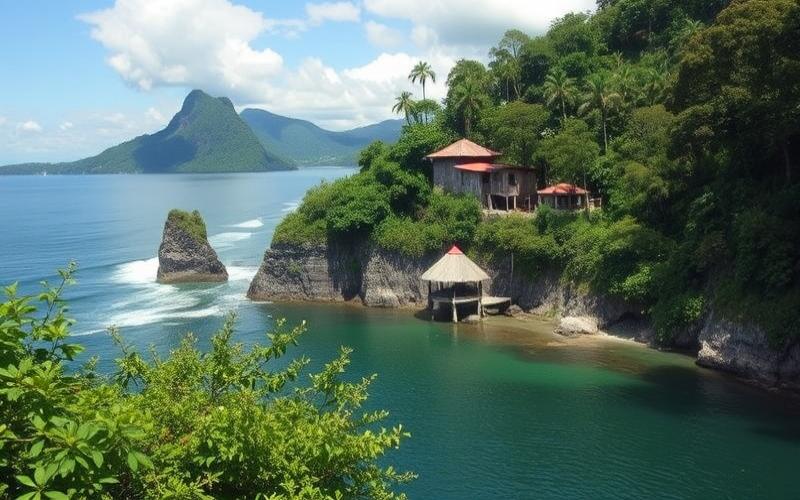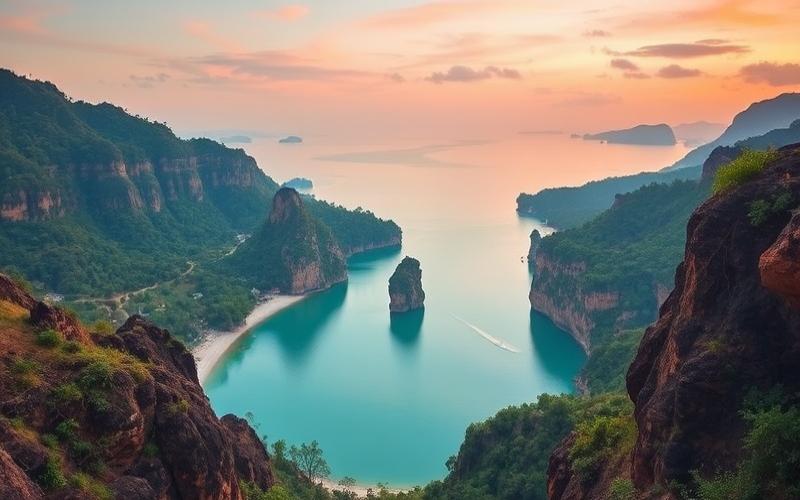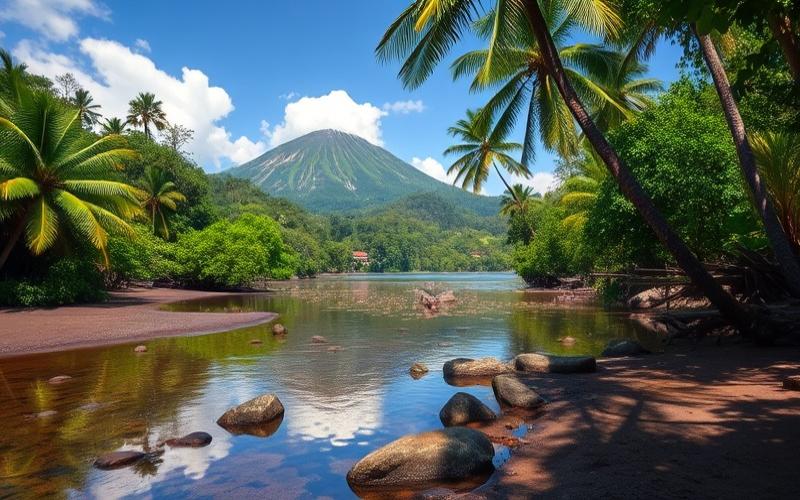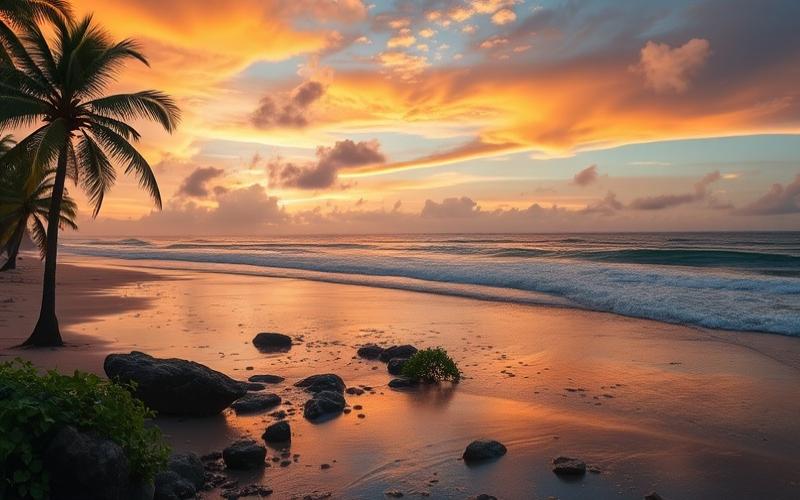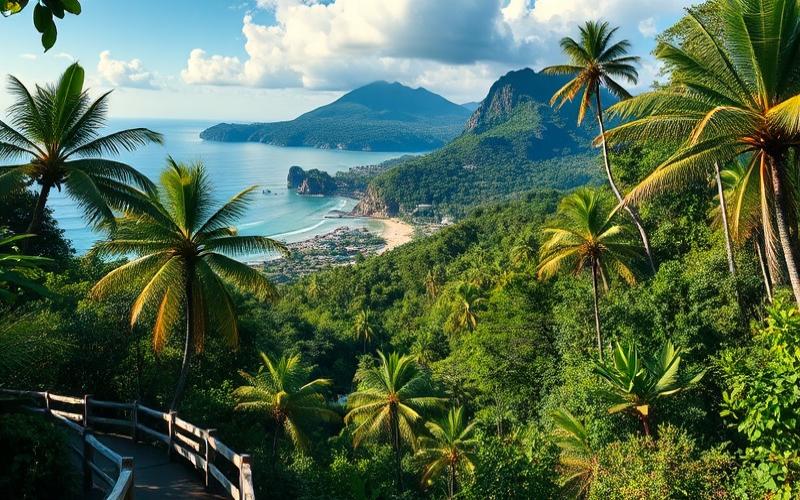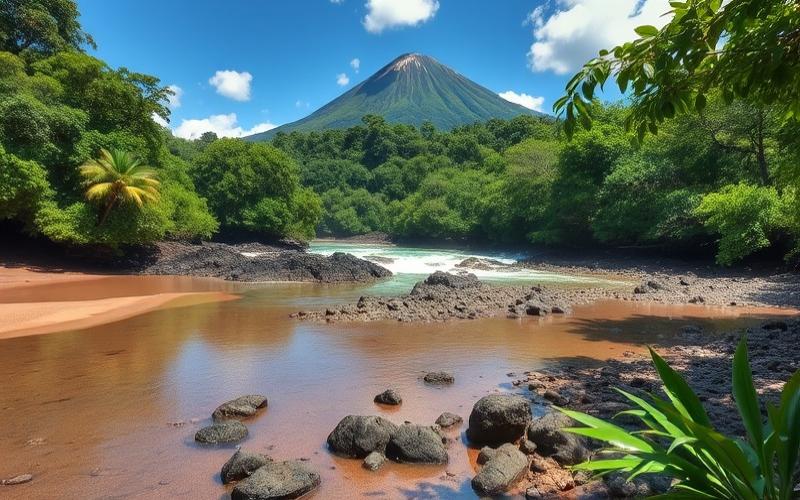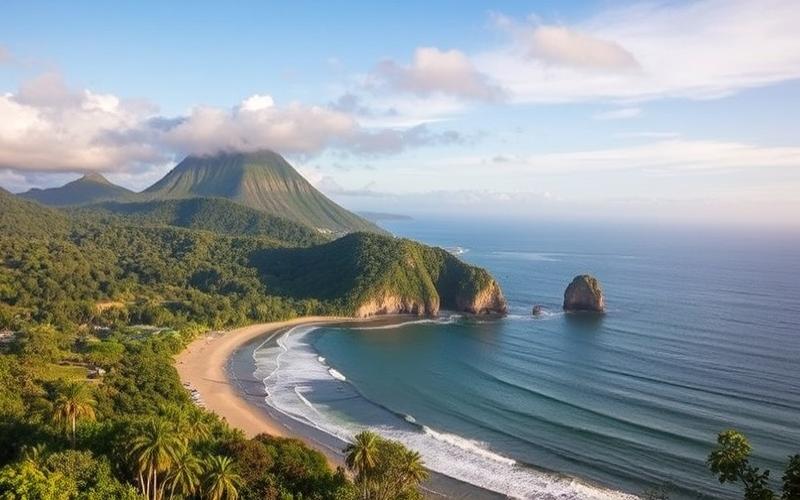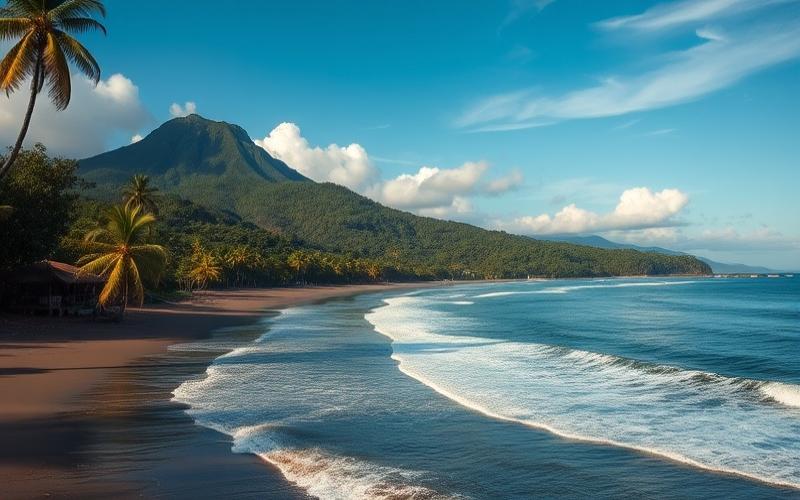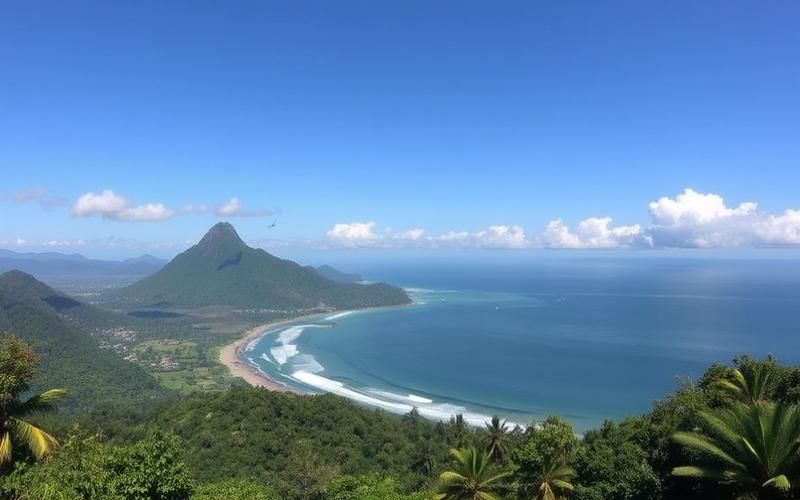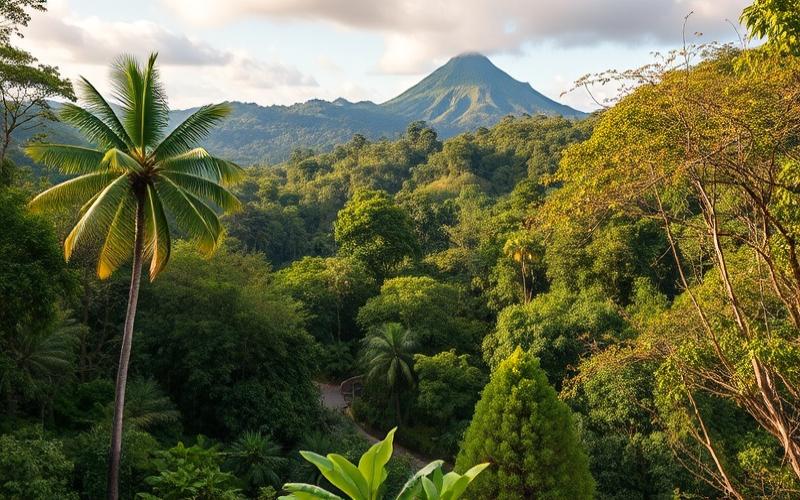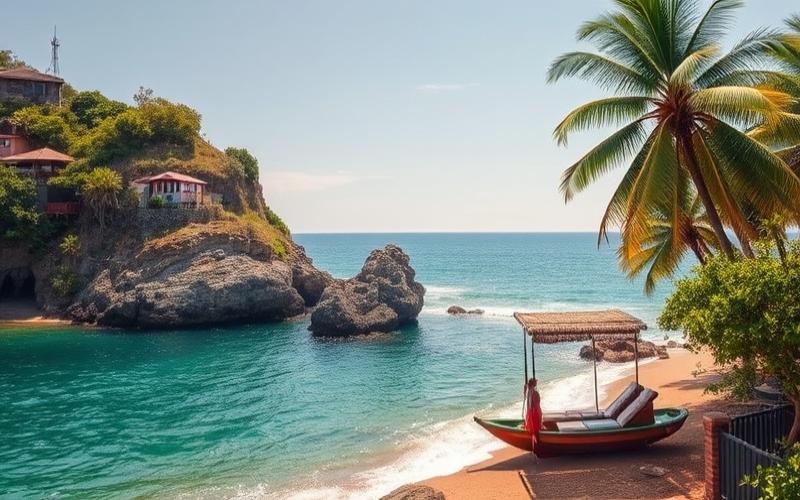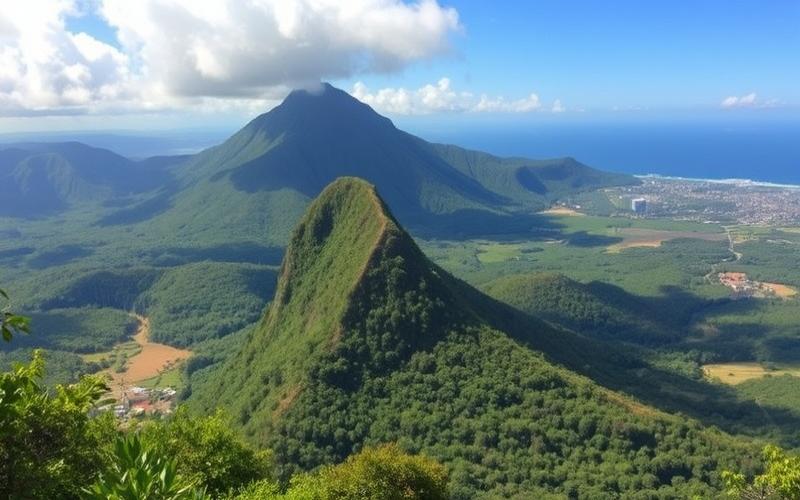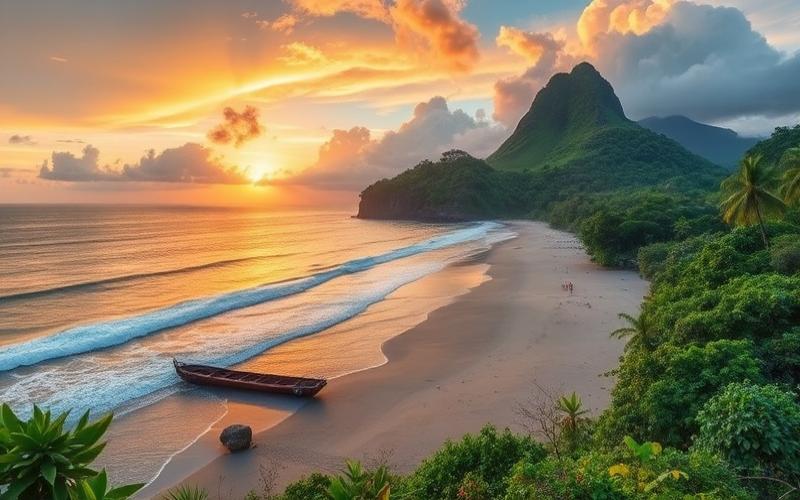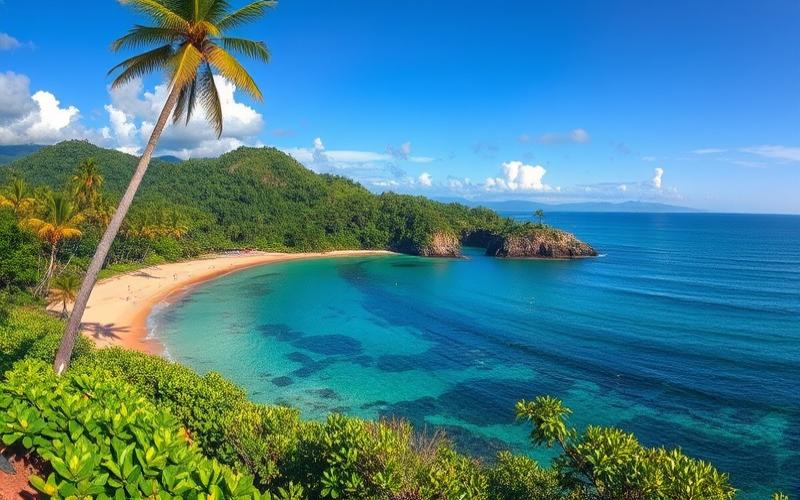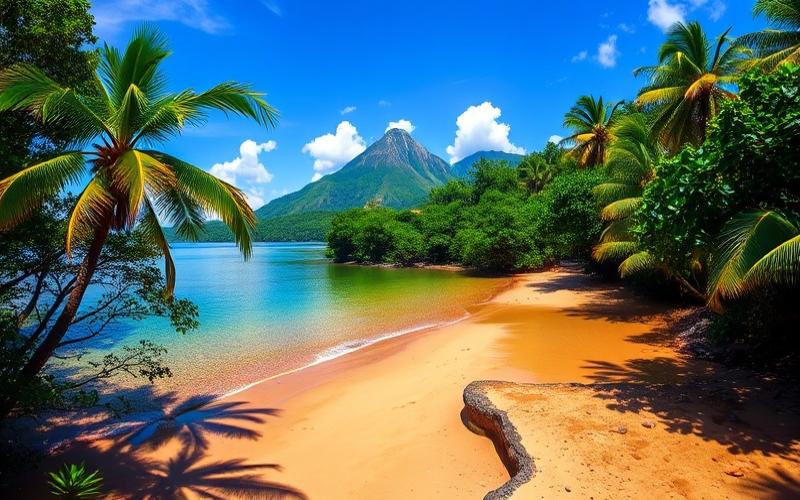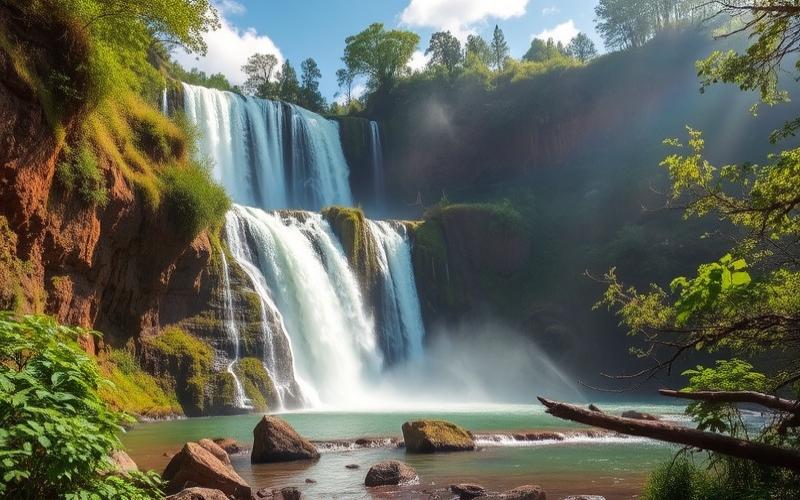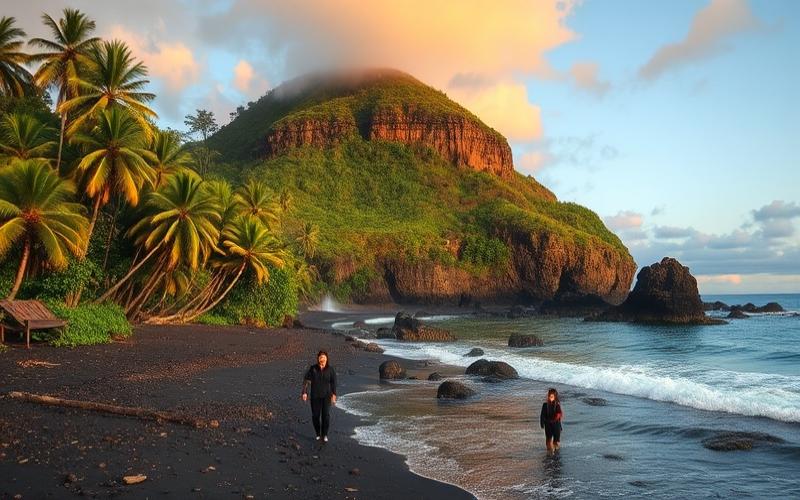
 Published on and written by Cyril Jarnias
Published on and written by Cyril Jarnias
Green Real Estate in Costa Rica: A Sustainable Commitment
Nestled in the heart of Costa Rica’s lush biodiversity, the green real estate sector is becoming an essential pillar for balancing economic development with environmental preservation.
Building a Sustainable Future
As the country increasingly commits to a sustainable future, strict standards and ambitious subsidies are planned for 2025, encouraging developers and individuals to adopt eco-friendly practices.
Regulations and Opportunities
By exploring the innovative regulations and financial incentives in place, this article will reveal how Costa Rica is transforming every real estate opportunity into a chance to protect its unique natural treasures.
Good to Know:
Costa Rica aims to become carbon neutral by 2050, reinforcing the importance of sustainable real estate investments today.
Green Building Standards in Costa Rica: A Practical Guide
The green building standards in effect in Costa Rica in 2025 are based on a set of laws, national regulations, and international certifications aimed at promoting sustainability, energy efficiency, and reducing the carbon footprint in the real estate sector.
Main Green Building Standards and Regulations Applicable in 2025
- Sustainable Building Code: Costa Rica imposes strict requirements for energy efficiency, water conservation, and waste management for all new residential and commercial projects.
- National Legislation on Water and Energy Management: Mandatory integration of rainwater harvesting systems, solar installations, and energy consumption reduction technologies.
- Specific Local Regulations for Coastal and Protected Areas: Adaptation of standards based on environmental sensitivity of regions, particularly for construction in Uvita, Dominical, and other tourist areas.
Examples of Recognized Sustainable Building Materials and Techniques
- Certified Wood (FSC or equivalent)
- Green Concrete (reduced clinker, incorporation of fly ash)
- Natural Insulation (rock wool, plant fibers)
- Low-VOC Paints and Coatings
- Natural Ventilation and Bioclimatic Systems
- Photovoltaic Solar Panels and Solar Water Heaters
- Rainwater Harvesting and Reuse
- Home Automation for Energy Optimization
Environmental Certifications Available for Real Estate Projects
| Certification | Origin | Main Objectives | Presence in Costa Rica |
|---|---|---|---|
| LEED | USA/International | Overall Energy Performance | Widely Used |
| EDGE | IFC/International | Water-Energy-Materials Optimization | Rapidly Growing |
| WELL | International | Occupant Health and Well-being | Developing |
| Local Certifications | Costa Rica | Compliance with National Standards | Mandatory |
Government and Regional Incentives
- Preferential Loan Rates for Green Projects: Some financial institutions, like Banco Promerica, offer reduced rates and lower fees for developers committed to green building.
- Tax Reductions and permit fee waivers for certified projects.
- Project Calls and Public Grants for integrating innovative solutions (solar, home automation, etc.).
Challenges for Developers and Architects
- High Initial Cost of sustainable materials and technologies.
- Lack of Specialized Workforce and ongoing training.
- Complex Regional Regulatory Constraints, especially in sensitive coastal areas.
- Certification Processing Times that can delay construction.
Practical Tips for Investors and Professionals
- Work with Experienced Professionals in green building and bioclimatic design, especially in areas with strict environmental constraints.
- Plan for Sustainable Solutions from the design phase (energy, water, materials).
- Target Recognized Certifications (LEED, EDGE) to enhance property market value.
- Ensure Ongoing Training for teams on new green technologies.
- Take Advantage of Financial Incentives and existing support programs.
International Comparison
| Aspect | Costa Rica | France | USA (LEED) |
|---|---|---|---|
| Regulatory Requirement | Mandatory for Some | Mandatory for Some | Voluntary (LEED) |
| Local Materials | Highly Valued | Growing | Variable |
| Incentives | Preferential Rates, Grants | Tax Credits, Aid | Local Tax Reductions |
| Certifications | LEED, EDGE, WELL, Local | HQE, BREEAM, LEED | LEED, WELL, Others |
| Innovation | Bioclimatic Design, Home Automation | Insulation, Positive Energy | High Energy Efficiency |
Key Takeaway:
Costa Rica stands out for systematically integrating green building standards into its legislation, valuing local materials, and offering targeted financial incentives. This makes the country a regional model for sustainable construction, while presenting specific challenges related to the tropical context and growing demand for eco-friendly buildings.
Good to Know:
Costa Rica is adopting strict green building standards, focusing on laws like the “Environmental Management Law” which will be strengthened in 2025 to promote sustainable practices. Materials such as bamboo or construction waste recycling are increasingly used, while certifications like EDGE and LEED serve as proof of environmental commitment. Tax incentives and regional grants encourage the adoption of these practices, although developers face high initial costs and a shortage of trained labor. For investors, partnering with locally compliant partners is advised. Compared to Costa Rica, some neighboring countries have less stringent standards, reflecting the country’s pioneering commitment to sustainability, though this presents additional challenges in terms of compliance and short-term profitability.
BREEAM Certification in Costa Rica: Criteria and Importance
The BREEAM certification (Building Research Establishment Environmental Assessment Method) is established as an international standard for assessing building environmental performance, and its adaptation to the Costa Rican context highlights specific criteria that consider local realities.
Specific BREEAM Criteria in Costa Rica
BREEAM-certified Costa Rican projects must meet an evaluation framework structured around three main areas: environmental, social, and economic.
Environmental
- Energy: reduction of energy consumption, use of renewable energy, optimization of equipment energy efficiency.
- Land Use and Ecology: preservation and restoration of local biodiversity, sustainable management of green spaces, combating soil artificialization.
- Water Management: limitation of drinking water consumption, rainwater harvesting systems, optimization of irrigation to preserve water resources.
- Materials and Waste: use of local, bio-based, or recycled materials, reduction of construction waste, promotion of local recycling streams.
Social
- Health and Well-being: indoor air quality, thermal and acoustic comfort, universal accessibility, user safety.
- Community Engagement: stakeholder consultation, integration into local urban fabric.
Economic
- Reduced Operating Costs: lower energy and water bills, easier maintenance.
- Property Value Enhancement: increased market attractiveness, higher rents, better resale liquidity.
- Creation of Local Jobs: use of local companies and artisans specialized in sustainable building.
Table: BREEAM Categories and Example Indicators
| Category | Example Indicators Adapted for Costa Rica |
|---|---|
| Energy | Renewable Energy Rate, Equipment Efficiency |
| Water | Annual Consumption, Greywater Reuse |
| Land Use | Vegetated Surface Area, Protected Native Species |
| Materials | % of Local, Recycled, or Certified Materials |
| Waste | Recycling Rate, Construction Site Management |
| Health and Well-being | Air Exchange Rate, Visual Comfort |
| Innovation | Adapted Climate Solutions, Urban Biodiversity |
Importance for Sustainable Development and Preservation of Local Ecosystems
BREEAM certification encourages the construction of buildings that minimize ecological impact while preserving biodiversity. This is crucial in Costa Rica, a country known for its rich and fragile ecosystems. It promotes:
- Protection of local species and restoration of natural habitats.
- Reduction of greenhouse gas emissions.
- Building adaptation to climate change (natural ventilation, rainwater management, materials suited to tropical climate).
Benefits for Property Owners and Real Estate Developers
- Reduced Operating Costs: savings on energy and water, simplified maintenance.
- Improved Occupant Quality of Life: comfort, health, increased appeal for tenants.
- Property Value Enhancement: certified buildings sell or rent faster and at higher prices.
- Risk Management: better regulatory compliance, anticipation of future environmental requirements.
Impact on Valuation of Green Real Estate Properties
| Criterion | Impact on Valuation |
|---|---|
| BREEAM Certification | Increase in Resale Value |
| Operating Savings | Attractiveness to Investors |
| Sustainable Image | Market Differentiation |
Recent Examples of BREEAM Certified Projects in Costa Rica
- Edificio Ecológico Sabana: office building in San José, rated “Very Good,” integrating solar panels, natural ventilation, and restored green spaces.
- Residencia Verde Horizonte: residential project in Heredia, “Excellent” certification, use of local materials and water harvesting systems.
- Costa Verde Shopping Center: shopping center in Puntarenas, “Good” certification, innovative waste management and integration of natural spaces for local wildlife.
Government Incentives and Grants
- Tax Reductions: partial property tax exemption for certified sustainable buildings.
- Innovation Grants: support for installation of solar panels, rainwater harvesting, and green roofs.
- Priority Access to Certain Public Markets: incentive for certified projects to secure contracts with the state or municipalities.
- Technical Support: support systems for certification and training of local professionals.
BREEAM certification, adapted for Costa Rica, is an essential lever for more sustainable, efficient, and respectful real estate that honors local ecological wealth.
Good to Know:
BREEAM certification adapted for Costa Rica evaluates real estate projects by focusing on energy efficiency, water resource management, and environmental impact, while integrating relevant social and economic criteria for the country. Beyond reducing ecological footprint and preserving local ecosystems, this certification offers significant economic benefits by increasing the value of green real estate and reducing operational costs for developers and owners through improved efficiency. Recent examples include the Guayacán complex in Puntarenas, which achieved a high rating thanks to its sustainable technologies and responsible waste management. Additionally, the Costa Rican government offers grants and tax incentives for developers adopting BREEAM standards, thereby strengthening the dynamism of the sustainable real estate sector.
Renewable Energy Subsidies in Costa Rica: Opportunities and Procedures
In 2025, Costa Rica offers several types of subsidies and financial incentives to promote renewable energy projects, with increasing attention to green real estate as part of its national decarbonization strategy. These measures target both new construction and renovation of existing building stock.
Types of Available Subsidies
| Subsidy Type | Target Sector | Amounts/Potential |
| Direct Investment Subsidies (concessional loans, non-repayable grants) | Solar, hydro, wind, geothermal projects; residential/commercial green real estate | Up to €25 million for some major pilot projects; proportional aid for individual investments |
| Tax Relief | Photovoltaic installations on new or renovated buildings | Partial or full exemption from import duties on solar equipment; property tax reduction for certified green buildings |
| Technical Support & Training | Real estate developers, local communities | Up to 100% coverage of training/technical assistance costs |
Financial Opportunities Offered by the Government
- Concessional loans and grants through the Central American Bank for Economic Integration (CABEI), IDB Invest, and international funds specialized in energy transition.
- Specific grants for green hydrogen sector development, including initial financial support covering up to 60% of eligible costs to integrate this technology in new commercial real estate.
- National tax incentives: partial exemptions on VAT/taxes when purchasing and installing solar or geothermal equipment. For buildings meeting LEED/BREEAM/Costa Rica Verde+ standards, additional tax relief for five years.
Eligibility Criteria
- Project located in Costa Rica; compliant municipal permits.
- Installation primarily using certified renewable technologies (solar photovoltaic, solar thermal, integrated hybrid systems).
- Minimum compliance with national energy efficiency standards (INTE G38:2023 Norm).
- For some international grants: measurable commitment to reduce building CO₂ emissions >20% compared to conventional standard.
Potential Subsidy Amounts
Amounts vary by project nature:
- For a new residential building fully equipped with solar:
Direct subsidy covering between 15% and 35% of total cost excluding tax related to renewable energy installations. - For major renovation aiming for green certification:
Aid up to $50,000 USD in mixed form (grant + subsidized credit).
More ambitious pilot projects recently received up to €25 million, particularly in the green hydrogen sector integrated into industrial or logistics zones.
Required Administrative Procedures
- Preliminary submission to the relevant ministry (MINAE) with detailed file describing the real estate project, its expected environmental impact, and technical specifications.
- Prior obtaining of municipal permits then submission via dedicated single electronic platform (Sistema Nacional para Proyectos Sostenibles – SINAPSIS).
- Technical validation by an interministerial committee including MINAE/ICE/CFIA depending on complexity.
- Official notification then progressive disbursement after on-site verification.
Simplified List:
- Prepare complete file
- Submit via SINAPSIS
- Await technical validation
- Sign tripartite agreement if accepted
- Receive funding/subsidy
Involved Institutions
- Ministry of Environment and Energy (MINAE): general coordination
- Costa Rican Electricity Institute (ICE): technical expertise & operational monitoring
- CABEI / IDB Invest / Global Climate Fund: main providers of external funding
- Local Municipalities: issuance of urban planning/environmental permits
Recent Impactful Legislation
The law “Executive Decree No. 43859-MINAE” effective early 2024 explicitly facilitates:
- Priority integration of solar PV in all new public residential projects,
- Accelerated administrative procedures (New construction with integrated photovoltaic panels on all roofs + greywater recovery → received approximately $170,000 USD cumulative in direct support/reduced taxation over three years; common electricity consumption covered >75% by own production; “Costa Rica Verde+” label.
EcoLodge Sarapiquí hotel renovation:
Switch to geothermal coupled with heat pump + high-performance insulation → obtained international aid (~$30,000 USD) via CABEI-IDB Energy Innovation program; estimated CO₂ emissions reduction >28%, estimated annual energy bill decrease ~42%.
Important: Incomplete files or submissions outside the official calendar are systematically rejected without immediate possibility of accelerated administrative appeal.
Good to Know:
In Costa Rica in 2025, subsidies for green real estate include tax incentives and reduced-rate loans for installing solar and geothermal systems. Individuals and developers can obtain up to 30% cost reduction for green technologies, provided constructions meet LEED or EDGE standards. Eligibility criteria require prior energy audits and energy efficiency certificates. Simple administrative procedures are required with the Ministry of Environment, supported by the Green Fund, to unlock these aids. Since the adoption of the Energy Transition Law in 2024, which further liberalizes renewable energies, several eco-district projects in San José have already benefited from these subsidies, achieving average energy savings of 25%.
Disclaimer: The information provided on this website is for informational purposes only and does not constitute financial, legal, or professional advice. We encourage you to consult qualified experts before making any investment, real estate, or expatriation decisions. Although we strive to maintain up-to-date and accurate information, we do not guarantee the completeness, accuracy, or timeliness of the proposed content. As investment and expatriation involve risks, we disclaim any liability for potential losses or damages arising from the use of this site. Your use of this site confirms your acceptance of these terms and your understanding of the associated risks.


